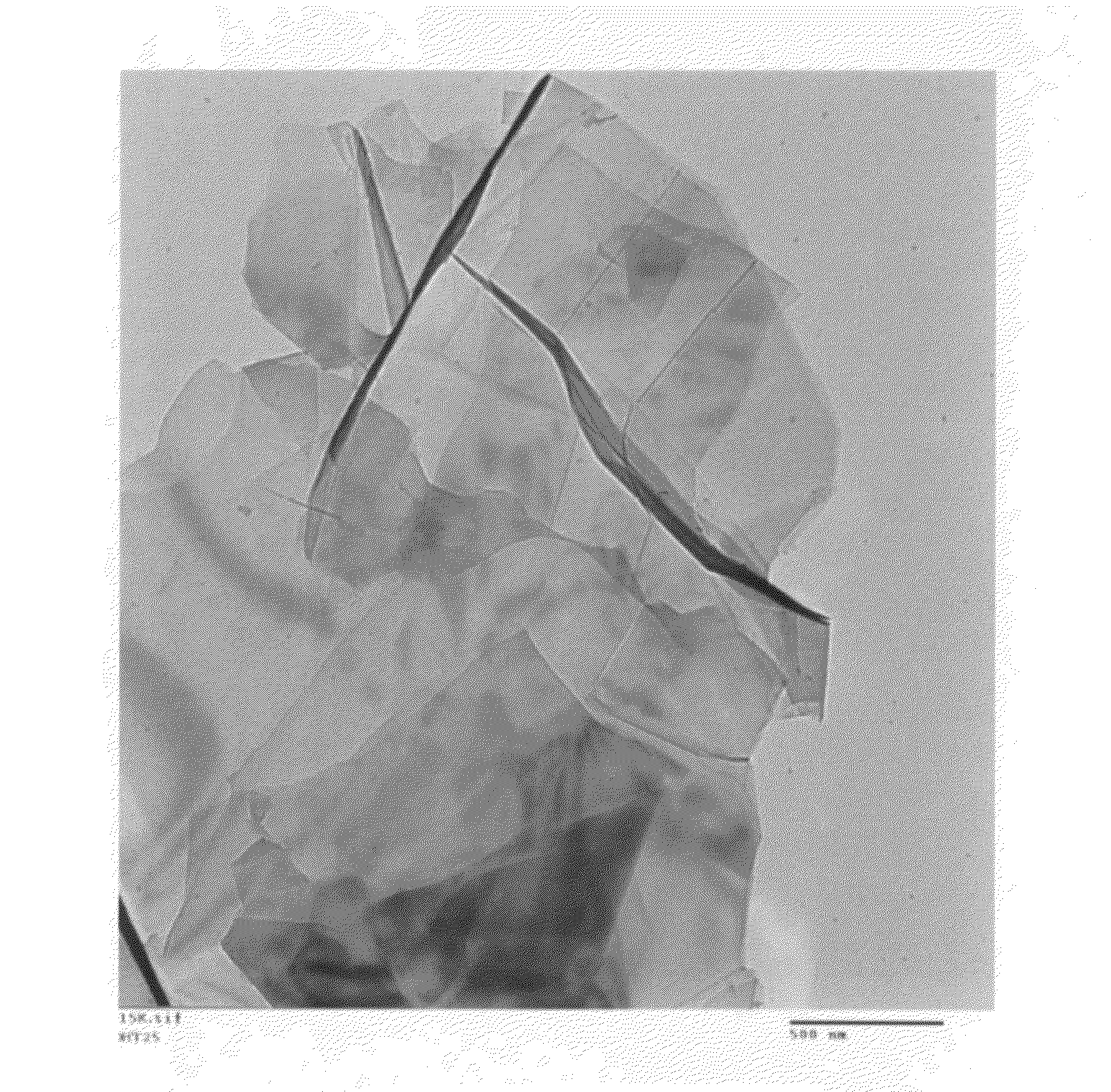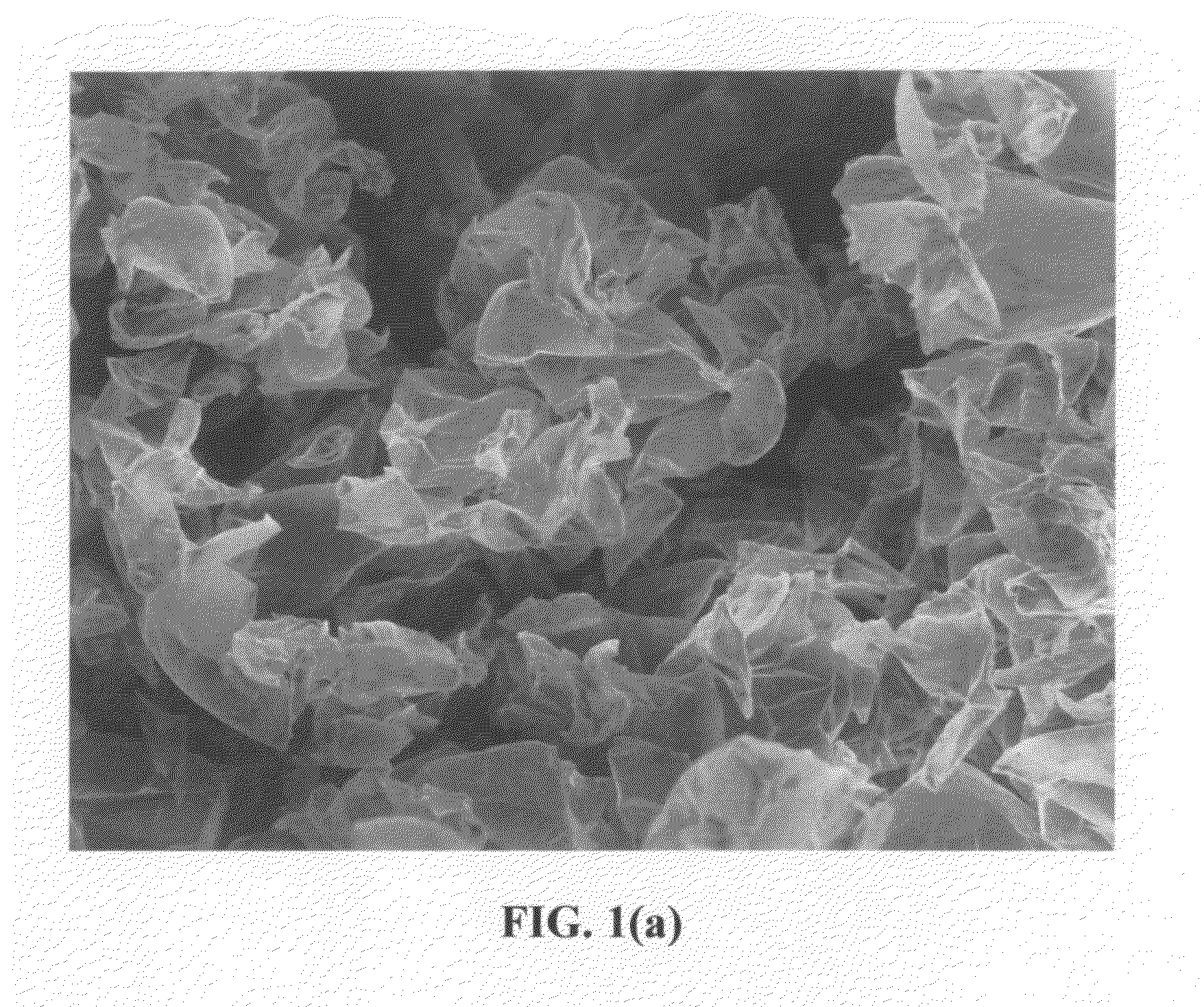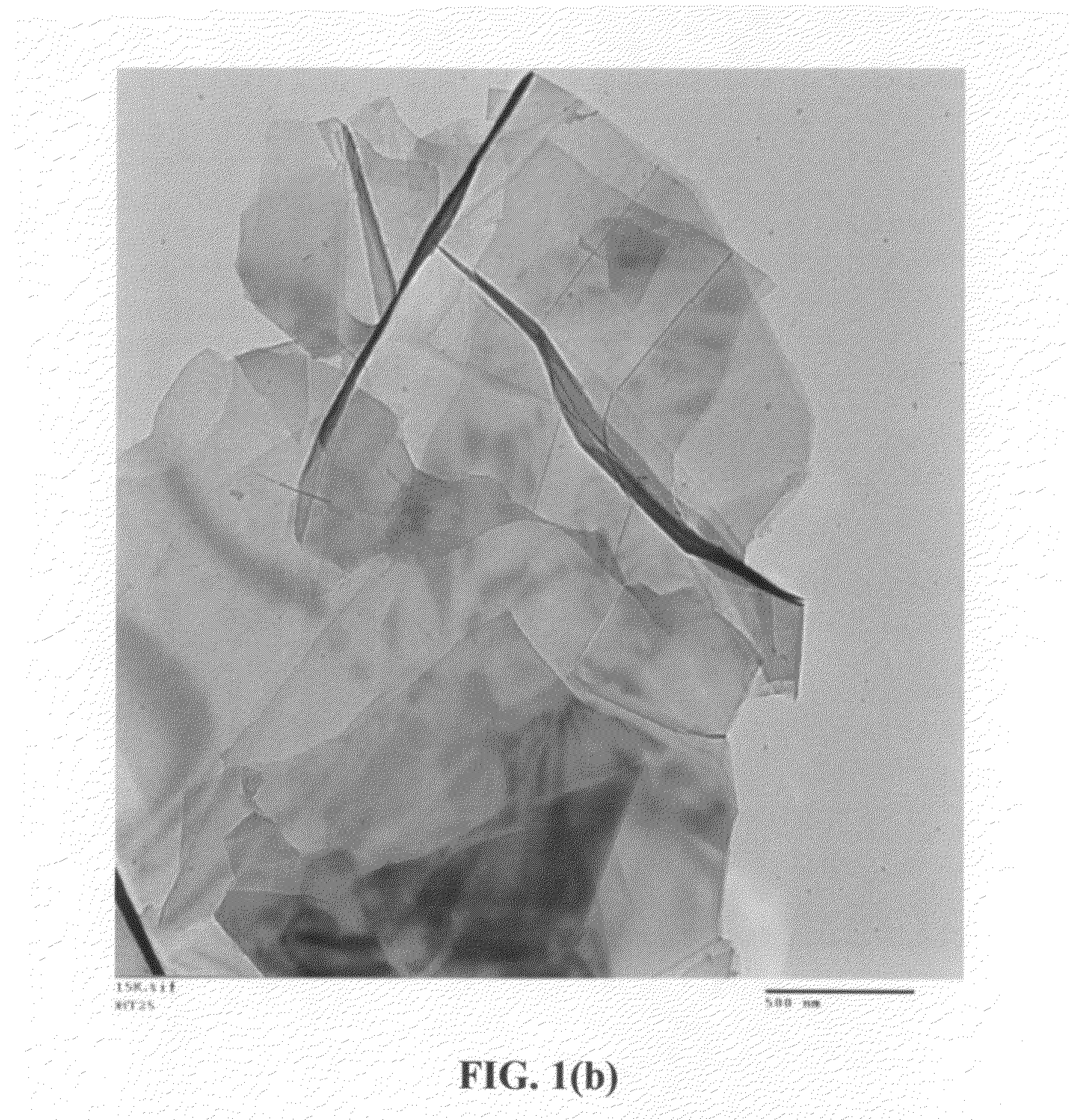Supercapacitor with a meso-porous nano graphene electrode
a nano graphene electrode and supercapacitor technology, applied in the direction of hybrid capacitors, capacitors, reduction-oxidation hybrid capacitors, etc., to achieve the effect of easy formation of meso-pores
- Summary
- Abstract
- Description
- Claims
- Application Information
AI Technical Summary
Benefits of technology
Problems solved by technology
Method used
Image
Examples
example 1
Oxidation, Exfoliation, and De-Oxygenation of Natural Graphite
[0066]Graphite oxide was prepared by oxidation of natural flake graphite with sulfuric acid, sodium nitrate, and potassium permanganate at a ratio of 4:1:0.05 at 30° C. for 24 hours, according to the method of Hummers [U.S. Pat. No. 2,798,878, Jul. 9, 1957]. Upon completion of the reaction, the mixture was poured into deionized water and filtered. The sample was then washed with 5% HCl solution to remove most of the sulfate ions and residual salt and then repeatedly rinsed with deionized water until the pH of the filtrate was approximately 7. The intent was to remove all sulfuric and nitric acid residue outside of graphite interstices. The slurry was then dried and stored in a vacuum oven at 60° C. for 24 hours.
[0067]The dried, intercalated (oxidized) compound was placed in a quartz tube that was inserted into a horizontal tube furnace pre-set at 1,050° C. to effect exfoliation for 1 minute. The resulting exfoliated graph...
example 2
Curved NGPs Further Treated with Poly(3-methyl-thiophene)
[0079]Electronically conductive polymers by themselves are promising supercapacitor electrode materials because the charge process involves the entire polymer mass and they provide low equivalent series resistance for the electrode. When combined with an NGP-type substrate material, the conducting polymer can impart pseudo-capacitance to the electrode. One desirable conductive polymer selected was poly(3-methyl-thiophene) (pMeT), particularly its p-doped variant. Poly(3-methyl-thiophene) could be synthesized by oxidative chemical polymerization technique using ferric chloride as a dopant in an inert atmosphere. However, we chose to prepare PMeT doped with different anions electrochemically in the presence of tetra-alkyl-ammonium salts using a carbon nodule-bonded NGP mat prepared in Example 1 as an electrode. The specific capacitance of a mat formed of curved NGPs and a curved NGP NGP mat with a pMeT treatment were found to be...
PUM
 Login to View More
Login to View More Abstract
Description
Claims
Application Information
 Login to View More
Login to View More - R&D
- Intellectual Property
- Life Sciences
- Materials
- Tech Scout
- Unparalleled Data Quality
- Higher Quality Content
- 60% Fewer Hallucinations
Browse by: Latest US Patents, China's latest patents, Technical Efficacy Thesaurus, Application Domain, Technology Topic, Popular Technical Reports.
© 2025 PatSnap. All rights reserved.Legal|Privacy policy|Modern Slavery Act Transparency Statement|Sitemap|About US| Contact US: help@patsnap.com



